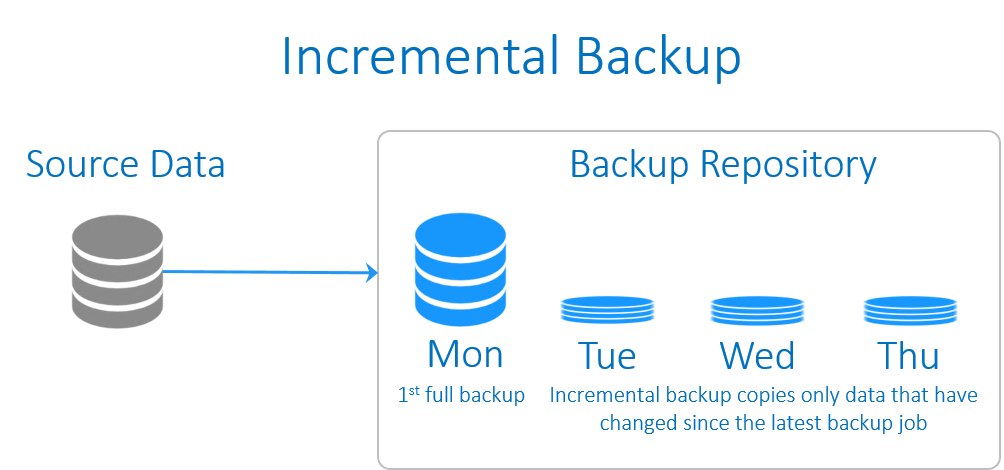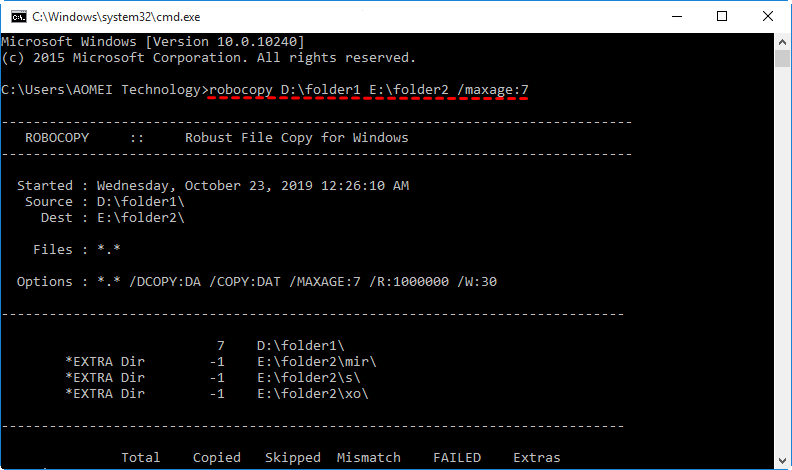

- #Robocopy to sync folders update
- #Robocopy to sync folders verification
- #Robocopy to sync folders windows
This is done using the /L command, as seen below. By using some simple switches, in conjunction with your intended switches, you can see what would happen before actually performing the command.
#Robocopy to sync folders verification
So now that you know a few of the options available to Robocopy, what are some of the most common operations that we can do? Verification of the File Transfer Operationīefore running a complicated file transfer operation, it's important that know that Robocopy will do what you expect it to do.
/W:30 - The wait time between retry attempts, default is 30 seconds. /R:10000000 - Number of times to retry on failure, default is 1 million. /COPY:DAT - Default file copy options. Data and attributes (but not timestamps). /DCOPY:DA - Default directory copy options. These translate into the following set of commands: It's important to note that when running simple Robocopy commands, there are a set of default options used. /B - Use backup mode, which uses SeBackupPrivilege and SeRestorePrivilege privileges to backup files that normally require Administrative rights. /Z - Use restartable mode in case the file transfers are interrupted. /CREATE - Create a directory tree and zero-length files only. /A+ & /A- Add or remove file attributes to the given files.  /MAXAGE & /MINAGE - Use these to filter the file ages, either maximums or minimums. /COPYALL - Copy all file info, such as attributes and timestamps. /E - Copy subfolders including empty folders (useful for recreating a folder structure). There are many, and the intention is not to cover all of the possible ones here but instead highlight some of the most useful. Now that we have an idea of what Robocopy can do let's see what are some of the most common options. Copy File Paths Larger than the 256 Character File LimitĪs you can see, there are a lot more options than your typical mv or cp command and are particularly suited for administrative tasks such as backups or network replication. Copy files using "Backup" mode for normally inaccessible files. Copy NTFS permissions, owners, and file metadata. Some of Robocopy's features that make file transfer tasks more reliable are listed below: Skip Allready Existing Files by checking size and timestamp information and comparing it to the source and target.Why not just use simple system commands like mv or cp? Those commands are very basic in the features that they offer, and when more complex scenarios come along are inadequate. Mirror Mode is provided to sync or mirror given files and folder or directory updated files will be updated and deleted files will be deleted on the target.
/MAXAGE & /MINAGE - Use these to filter the file ages, either maximums or minimums. /COPYALL - Copy all file info, such as attributes and timestamps. /E - Copy subfolders including empty folders (useful for recreating a folder structure). There are many, and the intention is not to cover all of the possible ones here but instead highlight some of the most useful. Now that we have an idea of what Robocopy can do let's see what are some of the most common options. Copy File Paths Larger than the 256 Character File LimitĪs you can see, there are a lot more options than your typical mv or cp command and are particularly suited for administrative tasks such as backups or network replication. Copy files using "Backup" mode for normally inaccessible files. Copy NTFS permissions, owners, and file metadata. Some of Robocopy's features that make file transfer tasks more reliable are listed below: Skip Allready Existing Files by checking size and timestamp information and comparing it to the source and target.Why not just use simple system commands like mv or cp? Those commands are very basic in the features that they offer, and when more complex scenarios come along are inadequate. Mirror Mode is provided to sync or mirror given files and folder or directory updated files will be updated and deleted files will be deleted on the target. #Robocopy to sync folders update
Preserve File Attributes and timestamp of the copied file where owner and audit information is also preserved.Ībility To Update Copied File Attributes and Timestamps of the copied files and folders which will set to the latest date and time.Īdministrator Owned File Copy is supported with the option /B. Resume Interrupted Copy when the network or remote host is down during a copy the copy operation can resume where it left. The command robocopy provides very useful features for files copying over network. Robocopy will copy the local or given file to the remote or destination location.
#Robocopy to sync folders windows
Robocopy or Robust File and Folder Copy application is very popular amongst Windows system administrators.






 0 kommentar(er)
0 kommentar(er)
